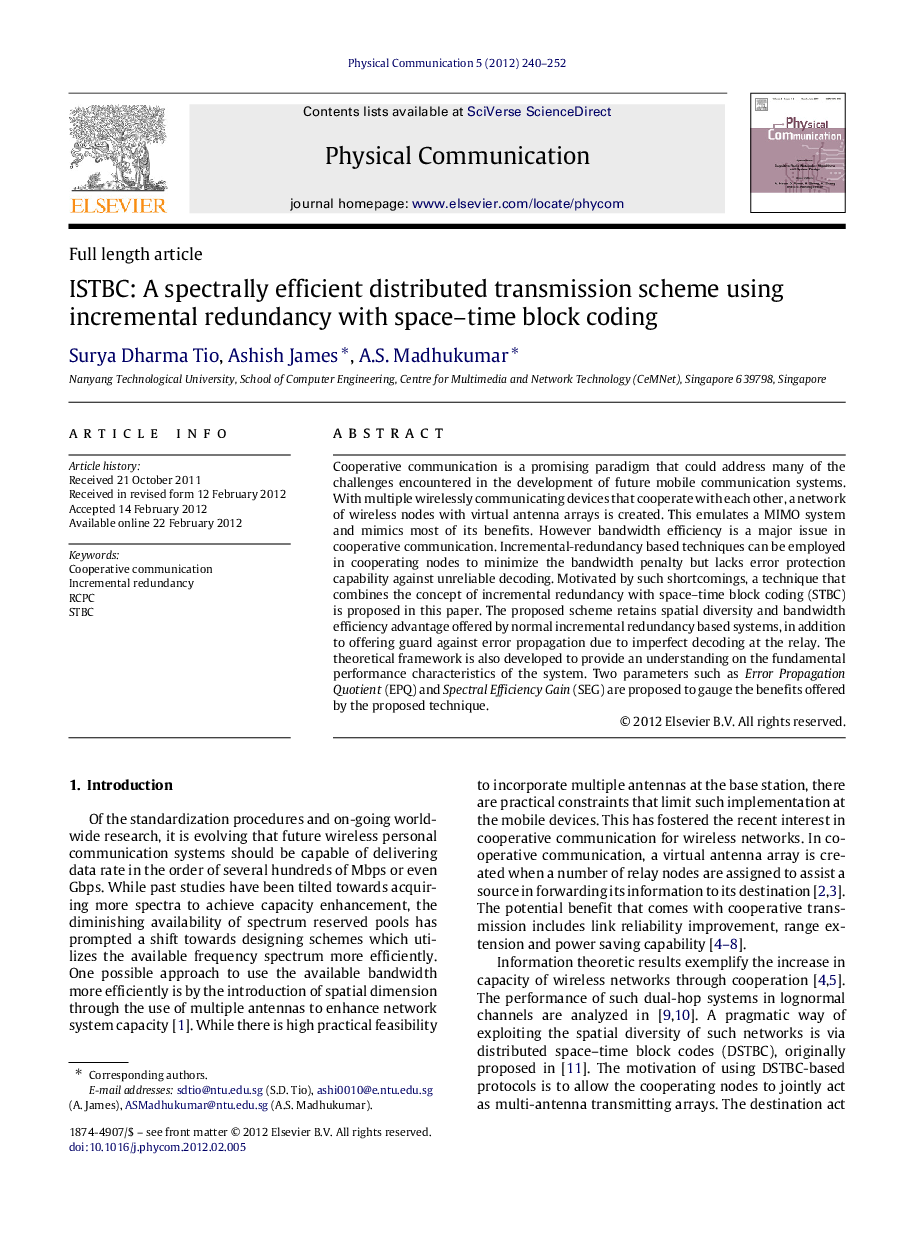| Article ID | Journal | Published Year | Pages | File Type |
|---|---|---|---|---|
| 465869 | Physical Communication | 2012 | 13 Pages |
Cooperative communication is a promising paradigm that could address many of the challenges encountered in the development of future mobile communication systems. With multiple wirelessly communicating devices that cooperate with each other, a network of wireless nodes with virtual antenna arrays is created. This emulates a MIMO system and mimics most of its benefits. However bandwidth efficiency is a major issue in cooperative communication. Incremental-redundancy based techniques can be employed in cooperating nodes to minimize the bandwidth penalty but lacks error protection capability against unreliable decoding. Motivated by such shortcomings, a technique that combines the concept of incremental redundancy with space–time block coding (STBC) is proposed in this paper. The proposed scheme retains spatial diversity and bandwidth efficiency advantage offered by normal incremental redundancy based systems, in addition to offering guard against error propagation due to imperfect decoding at the relay. The theoretical framework is also developed to provide an understanding on the fundamental performance characteristics of the system. Two parameters such as Error Propagation Quotient (EPQ) and Spectral Efficiency Gain (SEG) are proposed to gauge the benefits offered by the proposed technique.
